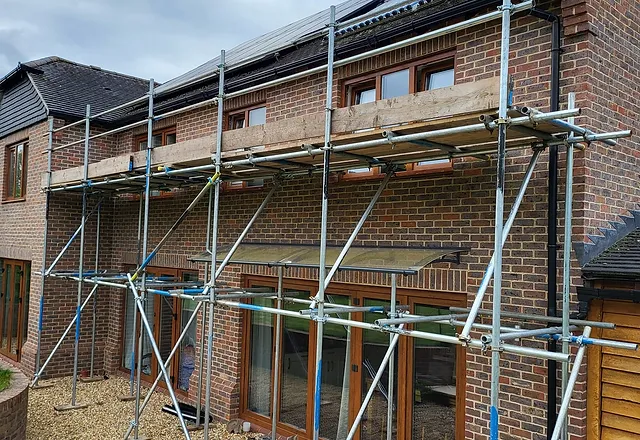Scaffolding is fundamental in construction, maintenance, and renovation projects, ensuring labourers can securely access high or hard-to-reach areas. Scaffolders are specialised professionals accountable for assembling and disassembling scaffolding structures that offer secure work platforms at several heights. Understanding the responsibilities of Scaffolders Berkshire and the factors that influence their charges is essential for anyone involved in construction or building maintenance.
Key Responsibilities of Scaffolders
Design and Planning:
Scaffolders collaborate with engineers, architects, and site managers to design scaffolding structures tailored to the specific project. These designs account for the load-bearing requirements, height, and access needs. Scaffolders must also ensure the structure is stable, safe, and compliant with local safety regulations and codes.
Erecting Scaffolding:
Once the design is approved, scaffolders are set to construct the scaffolding. This involves assembling tubes, fittings, and boards to form the structure. Scaffolders must ensure the scaffolding is level, properly secured to the building, and capable of bearing the load of workers, materials, and equipment.
Safety and Compliance:
A critical aspect of a scaffolder’s role is meeting all safety guidelines. They must adhere to stringent health and safety regulations, including inspecting the scaffolding before use and conducting regular checks throughout the project. Scaffolding must be designed to prevent accidents, such as slips, trips, and falls.
Modification and Adjustments:
As construction projects evolve, scaffolders may need to modify or extend the scaffolding structure. They are responsible for ensuring that changes are made safely and efficiently without compromising the structure’s stability.
Dismantling Scaffolding:
Once the project is complete, scaffolders are responsible for safely dismantling the scaffolding. This process is as critical as erecting, as improper dismantling could lead to accidents or property damage.
Inspection and Maintenance:
Scaffolders also regularly inspect scaffolding to ensure it remains safe throughout the project. This may include adjusting parts of the structure or replacing worn components. They must also maintain scaffolding equipment and keep track of inventory.
Factors Influencing Scaffolding Costs:
Size and Type of Scaffolding:
The size of the structure directly impacts the cost. Larger projects, such as multi-story buildings, will require more scaffolding materials, labour, and time, which increases the price. Scaffolding can also vary in type; for example, suspended scaffolding (used for very tall buildings) or mobile scaffolding (for quick-moving projects) tends to be more expensive than traditional scaffolding.
Height:
The height of the scaffolding is a significant cost factor. The taller the building, the more materials and safety precautions are required, increasing labour and equipment expenses. Working at height also requires more specialised skills, adding to the cost.
Access and Complexity:
Scaffolding structures for complex or irregularly shaped buildings may require more intricate designs, resulting in higher costs. Buildings in dense urban areas, on sloped land, or with limited access can make scaffolding more challenging and labour-intensive.
Location:
Scaffolding costs can vary depending on geographical location. Urban areas typically have higher prices due to increased demand and labour rates, whereas rural areas may offer lower rates. Additionally, the proximity of the scaffolding company to the project site can influence transportation costs.
Duration of Use:
Most scaffolding companies charge by the week or month. Longer projects will naturally cost more. Some companies offer discounts for longer rentals, but balancing this with the need to keep the project moving to avoid unnecessary expenses is essential.
Labor Costs:
Labour costs vary depending on the skill level and experience of the scaffolders. Highly experienced scaffolders may charge more for their expertise. Additionally, scaffolding that requires more manpower, either due to the size of the project or its complexity, will increase labour costs.
Average Scaffolding Costs
On average, scaffolding costs in the UK can range from £500 to £1,500 for small to medium-sized projects. Larger or more complex structures can cost upwards of £5,000 or more, depending on the factors discussed earlier.
- Single Side of a House (2-3 Stories): Expect to pay around £700 to £1,500.
- Detached House: Scaffolding around a detached house can cost between £1,000 and £2,500.
- Chimney Scaffolding: For chimney repairs, scaffolding costs can range from £400 to £1,000, depending on the height and access.
- Roof Scaffolding: The price of scaffolding for roof repairs typically ranges from £500 to £2,000.
Conclusion:
Scaffolders Surrey are essential in confirming the safety and efficiency of construction projects by delivering stable, secure platforms for workers at height. Their know-how in designing, erecting, and dismantling scaffolding structures certifies that projects are done safely and comply with rules. Scaffolding costs can vary significantly based on project size, height, location, and complexity, with prices typically ranging from £500 to £5,000. For anyone embarking on a construction or renovation project, understanding these cost drivers and the pivotal role of scaffolders is crucial in budgeting and ensuring a safe work environment.



More Stories
Advantages of Using Virtual Offices for GST Registration
Double Soap Dish: Space-Saving Bathroom Solution
Why Custom Printed Freezer Paper is the Secret Ingredient for Your Food Storage Needs?